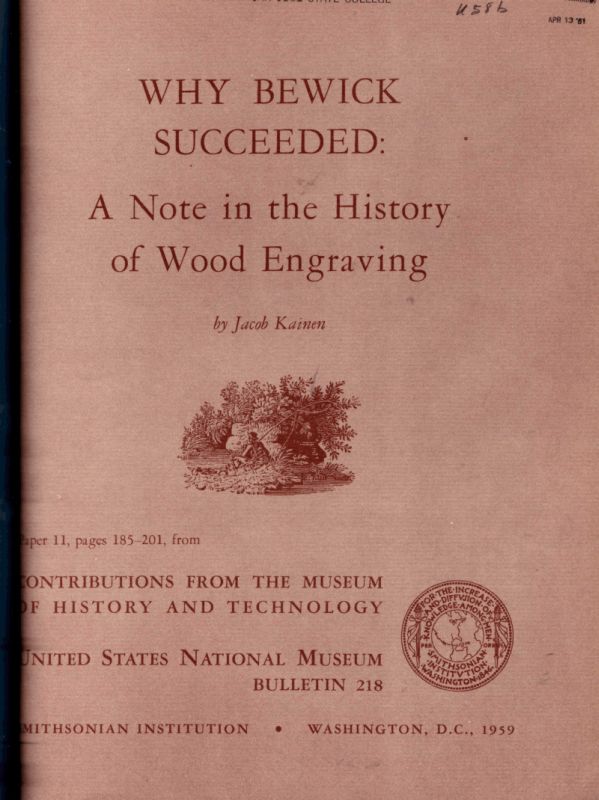
This eBook is for the use of anyone anywhere at no cost and with almost no restrictions whatsoever. You may copy it, give it away or re-use it under the terms of the Project Gutenberg License included with this eBook or online at www.gutenberg.org
Title: Why Bewick Succeeded
A Note in the History of Wood Engraving
Author: Jacob Kainen
Release Date: September 7, 2009 [eBook #29928]
Language: English
Character set encoding: ISO-8859-1
***START OF THE PROJECT GUTENBERG EBOOK WHY BEWICK SUCCEEDED***
Contributions from
The Museum of History and Technology:
Paper 11
Why Bewick Succeeded: A Note in the History of Wood Engraving
Jacob Kainen

| Page | |
| The Contemporary View of Bewick | 186 |
| Low Status of the Woodcut | 188 |
| Woodcut and Wood Engraving | 189 |
| Wood Engraving and the Stereotype | 197 |
By Jacob Kainen
A Note in the History of Wood Engraving
Thomas Bewick has been acclaimed as the pioneer of modern wood engraving whose genius brought this popular medium to prominence. This study shows that certain technological developments prepared a path for Bewick and helped give his work its unique character.
The Author: Jacob Kainen is curator of graphic arts, Museum of History and Technology, in the Smithsonian Institution's United States National Museum.
No other artist has approached Thomas Bewick (1753-1828) as the chronicler of English rustic life. The little wood engravings which he turned out in such great number were records of typical scenes and episodes, but the artist could also give them social and moral overtones. Such an approach has attracted numerous admirers who have held him in esteem as an undoubted homespun genius. The fact that he had no formal training as a wood engraver, and actually never had a lesson in drawing, made his native inspiration seem all the more authentic.
After 1790, when his A general history of quadrupeds appeared with its vivid animals and its humorous and mordant tailpiece vignettes, he was hailed in terms that have hardly been matched for adulation. Certainly no mere book illustrator ever received equal acclaim. He was pronounced a great artist, a great man, an outstanding moralist and reformer, and the master of a new pictorial method. This flood of eulogy rose increasingly during his lifetime and continued throughout the remainder of the 19th century. It came from literary men and women who saw him as the artist of the common man; from the pious who recognized him as a commentator on the vanities and hardships of life (but who sometimes deplored the frankness of his subjects); from bibliophiles who welcomed him as a revolutionary illustrator; and from fellow wood engravers for whom he was the indispensable trail blazer.
During the initial wave of Bewick appreciation, the usually sober Wordsworth wrote in the 1805 edition of Lyrical ballads:[1]
O now that the genius of Bewick were mine,
And the skill which he learned on the banks of the Tyne!
Then the Muses might deal with me just as they chose,
For I'd take my last leave both of verse and of prose.
What feats would I work with my magical hand!
Book learning and books would be banished the land.
If art critics as a class were the most conservative in their estimates of his ability, it was one of the most eminent, John Ruskin, whose praise went to most extravagant lengths. Bewick, he asserted, as late as 1890,[2] " ... without training, was Holbein's equal ... in this frame are set together a drawing by Hans Holbein, and one by Thomas Bewick. I know which is most scholarly; but I do not know which is best." Linking Bewick with Botticelli as a draughtsman, he added:[3] "I know no drawing so subtle as Bewick's since the fifteenth century, except Holbein's and Turner's." And as a typical example of popular appreciation, the following, from the June 1828 issue [Pg 187]of Blackwood's Magazine, appearing a few months before Bewick's death, should suffice:
Have we forgotten, in our hurried and imperfect enumeration of wise worthies,—have we forgotten "The Genius that dwells on the banks of the Tyne," the matchless, Inimitable Bewick? No. His books lie in our parlour, dining-room, drawing-room, study-table, and are never out of place or time. Happy old man! The delight of childhood, manhood, decaying age!—A moral in every tail-piece—a sermon in every vignette.
This acclaim came to Bewick not only because his subjects had a homely honesty, but also, although not generally taken into account, because of the brilliance and clarity with which they were printed. Compared with the wood engravings of his predecessors, his were more detailed and resonant in black and white, and accordingly seemed miraculous and unprecedented. He could engrave finer lines and achieve better impressions in the press because of improvements in technology which will be discussed later, but for a century the convincing qualities of this new technique in combination with his subject matter led admirers to believe that he was an artist of great stature.
[1] William Wordsworth, Lyrical ballads, London, 1805, vol. 1. p. 199.
[2] John Ruskin, Ariadne Florentina, London, 1890, pp. 98, 99.
[3] Ibid., p. 246.
Later, more mature judgment has made it plain that his contributions as a craftsman outrank his worth as an artist. He was no Holbein, no Botticelli—it is absurd to think of him in such terms—but he did develop a fresh method of handling wood engraving. Because of this he represents a turning point in the development of this medium which led to its rise as the great popular vehicle for illustration in the 19th century. In his hands wood engraving underwent a special transformation; it became a means for rendering textures and tonal values. Earlier work on wood could not do this; it could manage only a rudimentary suggestion of tones. The refinements that followed, noticeable in the highly finished products of the later 19th century, came as a direct and natural consequence of Bewick's contributions to the art.
Linton[4] and a few others object to the general claim that Bewick was the reviver or founder of modern wood engraving, not only because the art was practiced earlier, if almost anonymously, and had never really died out, but also because his bold cuts had little in common with their technician's concern with infinite manipulation of surface tones, a feature of later work. But this misses the main point—that Bewick had taken the first actual steps in the new direction.
[4] William Linton, The masters of wood engraving, London, 1889, p. 133.
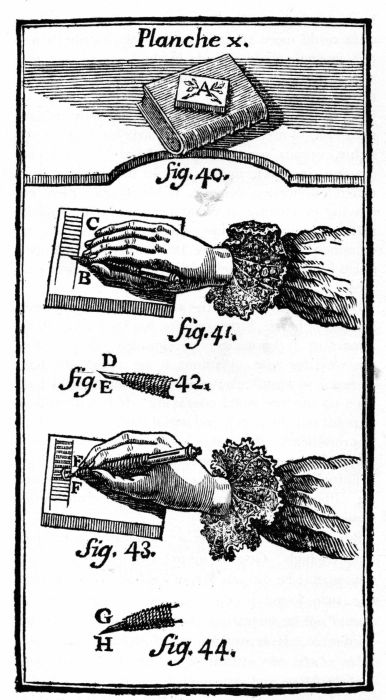 Figure 1.—Woodcutting Procedure, showing
method of cutting with the knife on the plank grain,
from Jean Papillon's Traité de la gravure en bois, 1766.
Figure 1.—Woodcutting Procedure, showing
method of cutting with the knife on the plank grain,
from Jean Papillon's Traité de la gravure en bois, 1766.
Unquestionably he gave the medium a new purpose, even though it was not generally adopted until after 1830. Through his pupils, his unrelenting industry, and his enormous influence he fathered a pictorial activity that brought a vastly increased quantity of illustrations to the public. Periodical literature, spurred by accompanying pictures that could be cheaply made, quickly printed, and dramatically pointed, became a livelier force in education. Textbooks,[Pg 188] trade journals, dictionaries, and other publications could more effectively teach or describe; scientific journals could include in the body of text neat and accurate pictures to enliven the pages and illustrate the equipment and procedures described. Articles on travel could now have convincingly realistic renditions of architectural landmarks and of foreign sights, customs, personages, and views. The wood engraving, in short, made possible the modern illustrated publication because, unlike copper plate engraving or etching, it could be quickly set up with printed matter. Its use, therefore, multiplied increasingly until just before 1900, when it was superseded for these purposes by the photomechanical halftone.
But while Bewick was the prime mover in this revolutionary change, little attention has been given to the important technological development that cleared the way for him. Without it he could not have emerged so startlingly; without it there would have been no modern wood engraving. It is not captious to point out the purely industrial basis for his coming to prominence. Even had he been a greater artist, a study of the technical means at hand would have validity in showing the interrelation of industry and art although, of course, the aesthetic contribution would stand by itself.
But in Bewick's case the aesthetic level is not particularly high. Good as his art was, it wore an everyday aspect: he did not give it that additional expressive turn found in the work of greater artists. It should not be surprising, then, that his work was not inimitable. It is well-known that his pupils made many of the cuts attributed to him, making the original drawings and engraving in his style so well that the results form almost one indistinguishable body of work. The pupils were competent but not gifted, yet they could turn out wood engravings not inferior to Bewick's own. And so we find that such capable technicians as Nesbit, Clennell, Robinson, Hole, the Johnsons, Harvey, and others all contributed to the Bewick cult.
Linton, who worshipped him as an artist but found him primitive as a technician, commented:[5] "Widely praised by a crowd of unknowing connoisseurs and undiscriminating collectors, we have yet, half a century after his death, to point out how much of what is attributed to him is really by his hand.
Chatto,[6] who obtained his information from at least one Bewick pupil, says that many of the best tailpieces in the History of British birds were drawn by Robert Johnson, and that "the greater number of those contained in the second volume were engraved by Clennell." Granted that the outlook and the engraving style were Bewick's, and that these were notable contributions, the fact that the results were so close to his own points more to an effective method of illustration than to the outpourings of genius.
[5] Ibid.
Bewick's training could not have been less promising. Apprenticed to Ralph Beilby at the age of fourteen, he says of his master:[7]
... The work-place was filled with the coarsest kind of steel-stamps, pipe moulds, bottle moulds, brass clock faces, door plates, coffin plates, bookbinders letters and stamps, steel, silver and gold seals, mourning rings, &c. He also undertook the engraving of arms, crests and cyphers, on silver, and every kind of job from the silversmiths; also engraving bills of exchange, bank notes, invoices, account heads, and cards.... The higher department of engraving, such as landscapes or historical plates, I dare say, was hardly thought of by my master....
A little engraving on wood was also done, but Bewick tells us that his master was uncomfortable in this field and almost always turned it over to him. His training, obviously, was of a rough and ready sort, based upon serviceable but routine engraving on metal. There was no study of drawing, composition, or any of the refinements that could be learned from a master who had a knowledge of art. Whatever Bewick had of the finer points of drawing and design he must have picked up by himself.
[6] William Chatto, and John Jackson, A treatise on wood engraving, London, 1861 (1st ed. 1839), pp. 496-498.
[7] Thomas Bewick, Memoir of Thomas Bewick, New York, 1925 (1st ed. London, 1862), pp. 50, 51.
When he completed his apprenticeship in 1774 at the age of twenty-one, the art of engraving and cutting on wood was just beginning to show signs of life after more than a century and a half of occupying the lowest position in the graphic arts. Since it could not produce a full gamut of tones in the gray register, which could be managed brilliantly by the copper plate media—line engraving, etching, mezzotint and aquatint—it was confined to ruder and less exacting uses, such as ornamental headbands and tailpieces for printers and as illustrations for cheap popular broadsides. When good illustrations[Pg 189] were needed in books and periodicals, copper plate work was almost invariably used, despite the fact that it was more costly, was much slower in execution and printing, and had to be bound in with text in a separate operation. But while the Society of Arts had begun to offer prizes for engraving or cutting on wood (Bewick received such a prize in 1775) the medium was still moribund. Dobson[8] described its status as follows:
During the earlier part of the eighteenth century engraving on wood can scarcely be said to have flourished in England. It existed—so much may be admitted—but it existed without recognition or importance. In the useful little État des Arts en Angleterre, published in 1755 by Roquet the enameller,—a treatise so catholic in its scope that it included both cookery and medicine,—there is no reference to the art of wood-engraving. In the Artist's Assistant, to take another book which might be expected to afford some information, even in the fifth edition of 1788, the subject finds no record, even though engraving on metal, etching, mezzotinto-scraping—to say nothing of "painting on silks, sattins, etc." are treated with sufficient detail. Turning from these authorities to the actual woodcuts of the period, it must be admitted that the survey is not encouraging.
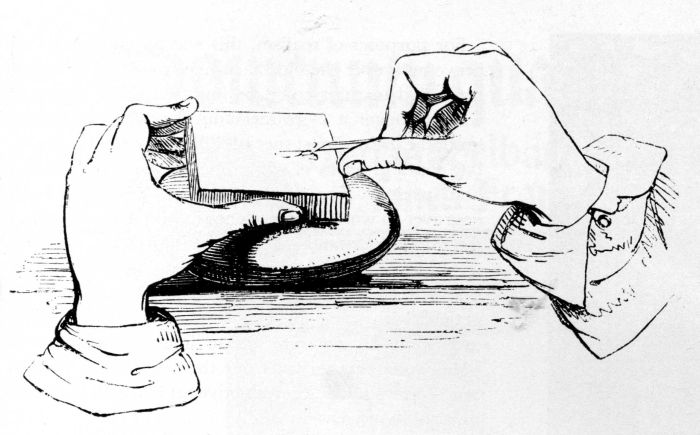 Figure 2.—Wood Engraving
Procedure, showing manipulation
of the burin, from Chatto and
Jackson, A treatise on wood engraving,
1861. (See footnote 6.)
Figure 2.—Wood Engraving
Procedure, showing manipulation
of the burin, from Chatto and
Jackson, A treatise on wood engraving,
1861. (See footnote 6.)
Earlier, among other critics of the deficiencies of the woodcut, Horace Walpole[9] had remarked:
I have said, and for two reasons, shall say little of wooden cuts; that art never was executed with any perfection in England; engraving on metal was a final improvement of the art, and supplied the defects of cuttings in wood. The ancient wooden cuts were certainly carried to a great heighth, but that was the merit of the masters, not of the method.
[8] Austin Dobson, Thomas Bewick and his pupils, Boston, 1884, pp. 1, 2.
[9] Horace Walpole, Anecdotes of painting in England. A catalogue of engravers who have been born, or resided in England. Digested from the manuscript of Mr. George Vertue ... London, 1782 (1st ed. 1762), p. 4.
It is necessary, before continuing, to distinguish clearly between the woodcut and the wood engraving, not only because early writers used these terms interchangeably, but also to determine exactly what Bewick contributed technically. The woodcut began with a drawing in pen-and-ink on the plank surface of a smooth-grained wood such as pear, serviceberry, or box. The woodcutter, using knife, gouges, and chisels, then lowered the wood surrounding the lines to allow the original drawing, unaltered, to be isolated in relief (see fig. 1). Thus the block, when inked and printed, produced facsimile impressions of the drawing in black lines on white paper. Usually an accomplished artist made the drawing, whereas only a skilled craftsman was needed to do the cutting; very few cutters were also capable of making their own drawings.
The wood engraving, on the other hand, started with a section of dense wood of a uniform texture, usually box or maple, and with the end-grain rather than the plank as surface. For larger engravings a number of sections were mortised together. The drawing was made on the block, not in pen-and-ink although this could be done (certain types of wood engraving reproduced pen drawings) but in gray washes with a full range of tones. The engraver, using a burin similar to that employed in copper plate work, then ploughed[Pg 190] out wood in delicate ribbons (see fig. 2). Since the surface was to receive ink, the procedure moved from black to white: the more lines taken away, the lighter the tones would appear, and, conversely, where fewest or finest lines were removed the tones would be the darkest. In the finished print the unworked surface printed black while each of the engraved lines showed as white. It was the "white line" that gave wood engraving its special quality. On the smoother end-grain it could be manipulated with extreme fineness, an impossibility with the plank side, which would tear slightly or "feather" when the burin was moved across the grain. Tones and textures approaching the scale of copper plate engraving could be created, except, of course, that the lines were white and the impressions not so brilliant. But since grays were achieved by the visual synthesis of black ink and white paper, it mattered little whether the engraved lines were black or white so long as the desired tones could be produced.
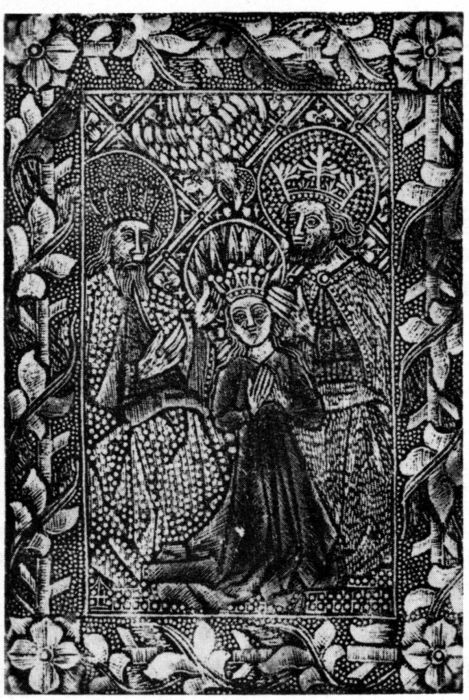 Figure 3.—Late 15th-Century White-Line Engraving
"The crowning of the Virgin," in the "dotted
manner" executed on metal for relief printing. Parts
were hand colored.
Figure 3.—Late 15th-Century White-Line Engraving
"The crowning of the Virgin," in the "dotted
manner" executed on metal for relief printing. Parts
were hand colored.
For purposes of realism, this was an enormous improvement over the old black-line woodcut. Natural tones and textures could be imitated. The engraver was no longer a mere mechanical craftsman cutting around existing lines; special skill was needed to translate tones in terms of white lines of varying thickness and spacing. The opportunity also existed for each engraver to work his own tones in his own manner, to develop a personal system. In short, the medium served the same purpose as copper plate line engraving, with the added virtue that it could be printed together with type in one impression. If it failed artistically to measure up to line engraving or to plank woodcut, this was not the fault of the process but of the popular reproductive ends which it almost invariably served.
Actually, white-line engraving for relief printing dates from the 15th century. The most conspicuous early examples are the so-called "dotted prints" or "gravures en manière criblée," in which the designs were brought out by dots punched in the plates, and by occasional engraved lines (see fig. 3). Until Koehler's[10] study made this fact plain, 19th-century critics could hardly believe that these were merely white-line metal relief prints, inked on the surface like woodcuts. But a number of other examples of the same period exist which were also made directly on copper or type metal—the method, although rudimentary, being similar in intent to 19th-century wood engraving. One of these examples (fig. 4), in the collection of the U. S. National Museum, is typical. This was not simply an ordinary line engraving printed in relief rather than in the usual way; the management of the lights shows that it was planned as a white-line engraving. The reason for this treatment, obviously, was to permit the picture and the type to be printed in one operation.
The well-known wood engravings of soldiers with standards, executed by Urs Graf in the early 1500's, are probably the only white-line prints in this medium by an accomplished artist until the 18th century. But these are mainly in outline, with little attempt to achieve tones. No advantage was gained by having the lines white rather than black other than an engaging roughness in spots: the prints were simply whimsical excursions by an inventive artist.
[10] Sylvester R. Koehler, "White-line engraving for relief-printing in the fifteenth and sixteenth centuries," in Annual report of the ... Smithsonian Institution ... for the year ending June 30, 1890, report of the U. S. National Museum, Washington, 1892, pp. 385-389.
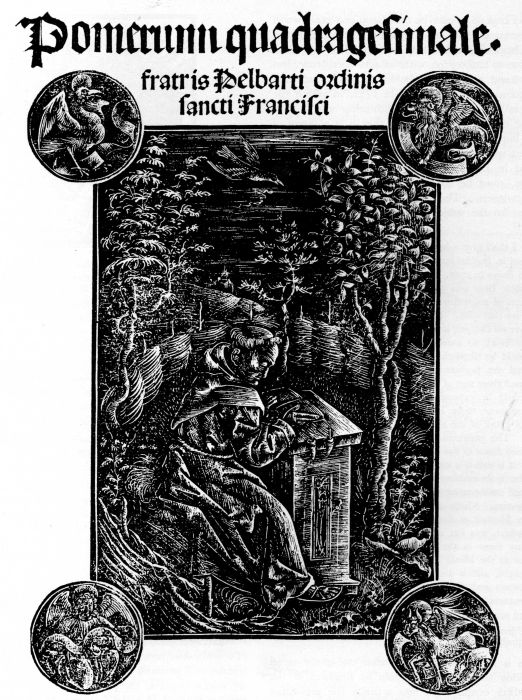 Figure 4.—White-Line Engraving on Metal for Relief Printing, "The Franciscan,
Pelbart of Temesvar, Studying in a Garden," from "Pomerium quadragesimale, fratris Pelbarti
ordinis sancti Francisci," Augsburg, 1502.
Figure 4.—White-Line Engraving on Metal for Relief Printing, "The Franciscan,
Pelbart of Temesvar, Studying in a Garden," from "Pomerium quadragesimale, fratris Pelbarti
ordinis sancti Francisci," Augsburg, 1502.
Relief engraving on type metal and end-grain wood really got under way as a consistent process in England at the beginning of the 18th century. Chatto[11] gives this date as conjecture, without actual evidence, but a first-hand account can be found in the rare and little-known book, published in 1752, in which the combination of anonymous authorship and a misleading title obscured the fact that it is a digest of John Baptist Jackson's manuscript journal. This eminent woodcutter, who was born about 1700 and worked in England during the early years of the century, must be considered an important and reliable witness. The unknown editor paraphrases Jackson on the subject of engraving for relief purposes:[12]
... I shall give a brief Account of the State of Cutting on Wood in England for the Type Press before he [Jackson] went to France in 1725. In the beginning of this Century a remarkable Blow was given to all Cutters on Wood, by an Invention of engraving on the same sort of Metal which Types are cast with. The celebrated Mr. Kirkhal, an able Engraver on Copper, is said to be the first who performed a Relievo Work to answer the use of Cutting on Wood. This could be dispatched much sooner, and consequently answered the purpose of Booksellers and Printers, who purchased those sort of Works at a much chaper [sic] Rate than could be expected from an Engraver on Wood; it required much more Time to execute with accuracy any piece of Work of the same Measure with those carved on Metal. This performance was very much in Vogue, and continued down to this Day, to serve for Initials, Fregii and Finali; it is called a clear Impression, but often gray and hazy, far from coming up to that clear black Impression produced with cutting on the side of a piece of Box-wood or Pear-tree. Much about the same time there started another Method of Engraving on the end ways of Wood itself, which was cut to the height of the Letters to accompany them in the Press, and engraved in the same Manner as the Metal Performance; this Method was also encouraged, and is the only way of Engraving on Wood at present used in the English Printing-houses. These performances are to be seen in Magazines, News Papers, &c. and are the Remains of the ancient Manner of Cutting on Wood, and is the reason why the Curious concluded it was intirely lost.
[11] Chatto, op. cit. (footnote 6), p. 446.
[12] An enquiry into the origins of printing in Europe, by a lover of art, London, 1752, pp. 25, 26.
This is important evidence that end-grain wood engraving was not only known in England in the early 18th century but was actually the prevailing style. In that country, where a woodcut tradition did not exist, the new method gained its first foothold. But it was not yet conceived in terms of white lines; it was merely a cheaper substitute for cutting with the knife on the plank. In European countries with long art and printing traditions, this substitute method was considered beneath contempt. Jackson[13] describes the aversion of French woodcutters for the newer and cheaper process:
From this Account it is evident that there was little encouragement to be hoped for in England to a Person whose Genius led him to prosecute his Studies in the ancient Manner; which obliged Mr. Jackson to go over to the Continent, and see what was used in the Parisian Printing-houses. At his arrival there he found the French engravers on Wood all working in the old Manner; no Metal engravers, or any of the same performance on the end of the Wood, was ever used or countenanced by the Printers or Booksellers in that City.
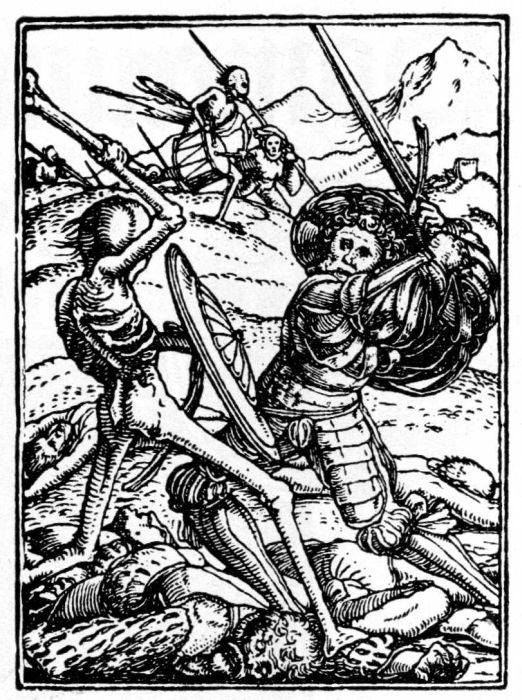 Figure 5.—Example of the Woodcut
Style that Created Facsimile
Drawings. Woodcut (actual size) by
Hans Lutzelburger, after a drawing
by Holbein for his "Dance of Death,"
1538.
Figure 5.—Example of the Woodcut
Style that Created Facsimile
Drawings. Woodcut (actual size) by
Hans Lutzelburger, after a drawing
by Holbein for his "Dance of Death,"
1538.
There were good reasons for the lack of development of a white-line style, even in England with its lower standards in printing and illustrative techniques. On the coarse paper of the period fine white lines could not be adapted to relief (typographical) presswork; they would be lost in printing because the ribbed paper received ink unevenly. Even the simple black[Pg 193] lines of the traditional woodcut usually printed spottily when combined with type. The white lines, then, had to be broadly separated. This did not permit the engraving of delicate tones. If this could not be achieved, the effect was similar to woodcutting but with less crispness and accuracy in the drawing. A good woodcut in the old manner could do everything the wood engraving could do, before Bewick, with the added virtue that the black line was comparatively clear and unequivocal, as can be seen in figure 5.
[13] Ibid., p. 27.
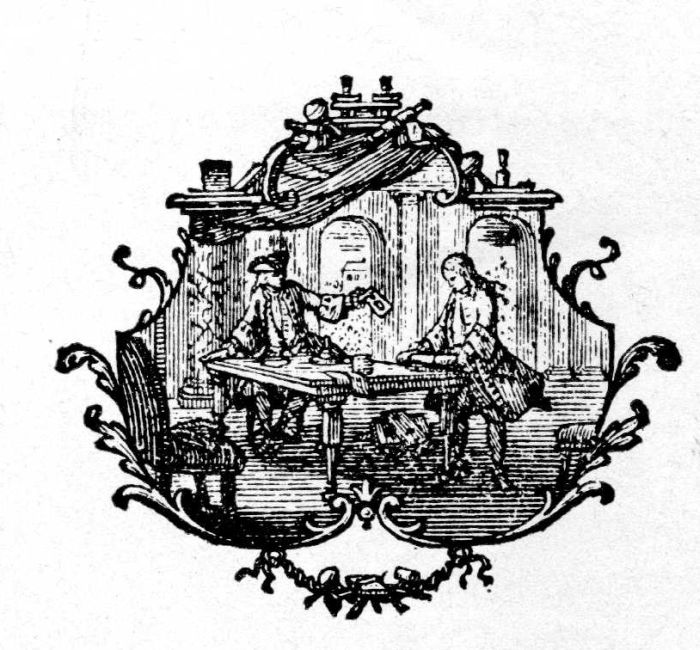 Figure 6.—Woodcut Tailpiece by
J. M. Papillon, from Traité historique
et pratique de la gravure en bois, 1766.
The cutting was done so minutely that
some details were lost in printing.
(Actual size.)
Figure 6.—Woodcut Tailpiece by
J. M. Papillon, from Traité historique
et pratique de la gravure en bois, 1766.
The cutting was done so minutely that
some details were lost in printing.
(Actual size.)
The woodcut, in the hands of a remarkable cutter, could produce miracles of delicacy. It could, in fact, have black lines so fine and so closely spaced as to take on the character of line engraving. It did not, of course, have the range of tones or the delicacy of modeling possible in the copper plate medium, where every little trench cut by the burin would hold ink BELOW the wiped-off surface, to be transferred to dampened paper under the heavy pressure of the cylinder press. In addition, the roughness of early paper, which was serious for the woodcut, created no difficulties for the line engraver or for other workers in the intaglio or gravure media.
But the influence of copper plate work was strong, and some skillful but misguided woodcut craftsmen tried to obtain some degree of its richness. French artists from about 1720, notably Jean M. Papillon, produced cuts so delicate that their printing became a problem (see fig. 6). Jackson, who had worked with the French artist in Paris, condemned his efforts to turn the woodcut into a tonal medium through the creation of numerous delicate lines because such effects were impossible to print. Jackson[14] is quoted in the Enquiry:
In 1728 Mr. Pappillon began his small Paris Almanack, wherein is placed Cuts (done on Wood) allusive to each Month, with the Signs of the Zodiack, in such a Minute Stile, that he seems to forget in that Work the Impossibility of printing it in a Press with any Clearness ... But alas! His father and M. le Seur [also woodcutters] had examined Impression and its Process, and saw how careful the Ancients were to keep a proper Distance between their Lines and hatched Works, so as to produce a clean Impression ... I saw the Almanack in a horrid Condition before I left Paris, the Signs of the Zodiack wore like a Blotch, notwithstanding the utmost Care and Diligence the Printer used to take up very little Ink to keep them clean.
It is clear that too thin a strip of white between black lines was not suitable for printing in the first half of the 18th century. But when Bewick's cuts after 1790 are examined we can see many white lines thinner than a hair. Obviously something had happened to permit him a flexibility not granted to earlier workers on wood. Bewick's whole craft depended upon his ability to control white lines of varying thickness. Why was he able to do this, and why could it be done without trouble by others after him?
Early paper, as already mentioned, had a ribbed grain because it was made on a hand mould in which wires were closely laid in one direction, but with enough space between to allow the water in the paper pulp to drain through. Crossing wires, set some distance apart, held them together. Each wire, however, made a slight impression in the finished paper, the result being a surface with minute ripples. The surface of this laid paper presented irregularities even after the glazing operation, done with hammers before about 1720 and with wooden rollers up to about 1825.[15]
In 1756 James Whatman began to manufacture a new, smooth paper to replace the laid variety that had been used since the importation of paper into Europe in the 12th century. Whether Whatman or the renowned printer John Baskerville was the guiding spirit in this development is uncertain.[16] Baskerville,[Pg 194] who had been experimenting with type faces of a lighter and more delicate design, had been dissatisfied with the uneven surface of laid paper. Possibly he saw examples of the Chinese wallpaper on wove stock, made from a cloth mesh, which was a staple of the trade with the Orient. Hunter[17] describes the new mould:
The wove covering was made of fine brass screening and received its name because it was woven on a loom in about the same manner as cloth. It left in the paper an indistinct impression resembling a fabric. Baskerville had been in the japanning and metal-working trades before becoming a printer, so that he was naturally familiar with this material, metal screening having been used in England for other purposes before it was put to use as a material upon which to mould sheets of paper.
The first book printed in Europe on wove paper unquestionably was the Latin edition of Virgil produced by Baskerville in 1757. This was, however, partly on laid also. The actual paper was made in James Whatman's mill in Maidstone, Kent, on the banks of the river Len, where paper had been made since the 17th century. Whatman, who became sole owner of the mill in 1740, specialized in fine white paper of the highest quality. But while the book attracted considerable attention it did not immediately divert the demand for laid paper, since it was looked on more as an oddity than as a serious achievement. Baskerville was strictly an artist: he took unlimited time and pains, he had no regard for the prevailing market, and he produced sporadically; also, he was harshly criticized and even derided for his strange formats.[18] With such a reputation for impracticality the printer's influence was negligible during his lifetime although, of course, it was widely felt later.
[14] Jackson, op. cit. (footnote 12), p. 29.
[15] Dard Hunter, Papermaking through eighteen centuries, New York, 1930, pp. 148, 152.
[16] A. T. Hazen, "Baskerville and James Whatman," Studies in Bibliography, Bibliographical Society of the University of Virginia, vol. 5, 1952-53. For a brilliant study of the Whatman mill, where practically all wove paper up to the 1780's was manufactured, see Thomas Balston's James Whatman, father and son, London, 1957.
[17] Hunter, op. cit. (footnote 15), p. 215.
[18] R. Straus and R. K. Dent, John Baskerville, Cambridge, 1907. On page 19 the authors include a letter to Baskerville from Benjamin Franklin, written in 1760 in a jocular tone, which notes that he overheard a friend saying that Baskerville's types would be "the means of blinding all the Readers in the Nation owing to the thin and narrow strokes of the letters."
About 1777 the French became acquainted with wove paper, which Franklin brought to Paris for exhibition. In 1779, according to Hunter,[19] M. Didot the famous printer, "having seen the papier vélin that Baskerville used, addressed a letter to M. Johannot of Annonay, a skilled papermaker, asking him to endeavour to duplicate the smooth and even surface of this new paper. Johannot was successful in his experiments, and for his work in this field he was in 1781 awarded a gold medal by Louis XVI."
[19] Hunter, op. cit. (footnote 15), p. 219.
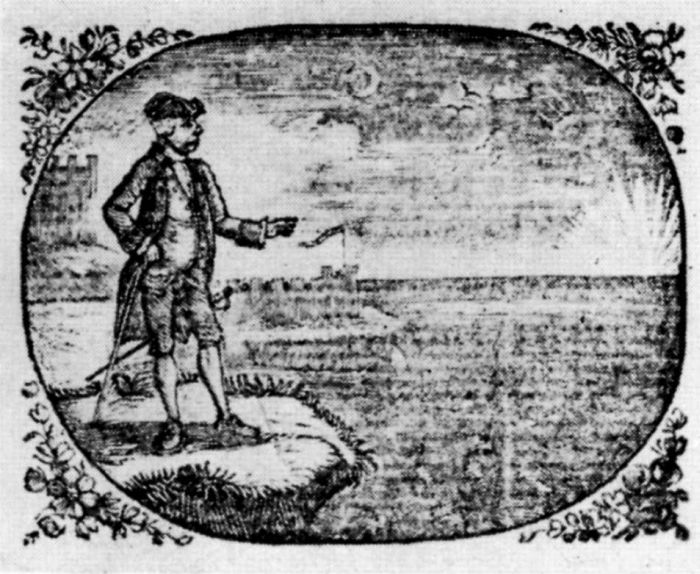 Figure 7.—Wood Engraving by
Thomas Bewick, "The Man and the
Flea," for Fables, by the late Mr. Gay,
1779. (Actual size.) Note how the
closely worked lines of the sky and
water have blurred in printing on laid
paper. The pale vertical streak is
caused by the laid mould.
Figure 7.—Wood Engraving by
Thomas Bewick, "The Man and the
Flea," for Fables, by the late Mr. Gay,
1779. (Actual size.) Note how the
closely worked lines of the sky and
water have blurred in printing on laid
paper. The pale vertical streak is
caused by the laid mould.
Wove paper was so slow to come into use that Jenkins gives the date 1788 for its first appearance in book printing.[20] While he missed a few examples, notably by Baskerville, it is certain that few books with wove paper were published before 1790. But after that date its manufacture increased with such rapidity that by 1805 it had supplanted laid paper for many printing purposes.
The reasons for this gap between the introduction and the acceptance of the new paper are not clear; the inertia of tradition as well as the probable higher cost no doubt played a part, and we may assume that early wove paper had imperfections and other drawbacks serious enough to cause printers to prefer the older material.
Bewick's early work was printed on laid paper. Up to 1784 he had worked in a desultory fashion on wood, much of his time being occupied with seal cutting because there was still no real demand for wood engraving. In Gay's Fables, published in 1779, the cuts printed so poorly on the laid paper (see fig. 7) that Dobson[21] was moved to say:
Generally speaking, the printing of all these cuts, even in the earlier editions (and it is absolutely useless to consult[Pg 195] any others), is weak and unskillful. The fine work of the backgrounds is seldom made out, and the whole impression is blurred and unequal.
[20] Rhys Jenkins, "Early papermaking in England, 1495-1788," Library Association Record, London, 1900-1902, vol. 2, nos. 9 and 11; vol. 3, no. 5; vol. 4, nos. 3 and 4.
[21] Dobson, op. cit. (footnote 8), p. 56.
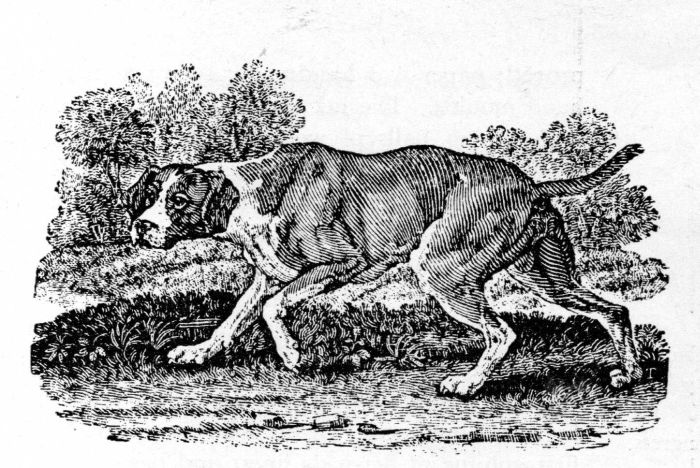 Figure 8.—"The Spanish Pointer", illustration
(actual size) by Thomas Bewick, from A general
history of quadrupeds, 1790, in the collections of the
Library of Congress.
Figure 8.—"The Spanish Pointer", illustration
(actual size) by Thomas Bewick, from A general
history of quadrupeds, 1790, in the collections of the
Library of Congress.
Even in the Select fables of Aesop and others of 1784, when Bewick's special gifts began to emerge, the cuts on laid paper appeared weak in comparison with his later work. Bewick was still using wood engraving as a cheaper, more quickly executed substitute for the woodcut. The designs were based upon Croxall's edition of Aesop's Fables, published in 1722, which was probably the best and most popular illustrated book published in England during the century up to Bewick's time. According to Chatto, the cuts were made with the burin on end-grain wood, probably by Kirkall,[22] but Bewick believed they were engraved on type metal.[23] It was not easy to tell the difference. Type metal usually made grayer impressions than wood and sometimes, but not always, nail-head marks appeared where the metal was fastened to the wood base. The Croxall cuts, in turn, were adapted with little change from 17th-century sources—etchings by Francis Barlow and line engravings by Sebastian Le Clerc. Bewick's cuts repeated the earlier designs but changed the locale to the English countryside of the late 18th century. This was to be expected; to have a contemporary meaning the actors of the old morality play had to appear in modern dress and with up-to-date scenery. But technically the cuts followed the pattern of Croxall's wood engraver, although with a slightly greater range of tone. Artistically Bewick's interpretation was inferior because it was more literal; it lacked the grander feeling of the earlier work.
Bewick really became the prophet of a new pictorial style in his A general history of quadrupeds, published in 1790 on wove paper (see figs. 8, 9, and 10). Here his animals and little vignetted tailpieces of observations in the country announced an original subject for illustration and a fresh treatment of wood engraving, although some designs were still copied from earlier models. The white line begins to function with greater elasticity; tones and details beyond anything known previously in the medium appear with the force of innovation. The paper was still somewhat coarse and the cuts were often gray and muddy. But the audacity of the artist in venturing tonal subtleties was immediately apparent.
[22] Chatto, op. cit. (footnote 6), p. 448.
[23] Thomas Bewick, Fables of Aesop and others, Newcastle, 1818.
One of Bewick's old friends at Newcastle had been William Bulmer, who by the 1790's had become a famous printer. In 1795 he published an edition of Poems by Goldsmith and Parnell, which was preceded by an Advertisement announcing his intentions:
The present volume ... [is] particularly meant to combine the various beauties of PRINTING, TYPE-FOUNDING, ENGRAVING, and PAPER-MAKING.... The ornaments are all engraved on blocks of wood, by two of my earliest acquaintances, Messrs. Bewick [Thomas and his brother and apprentice John], of Newcastle upon Tyne and London, after designs made from the most interesting passages of the Poems they embellish. They have been executed with great care, and I may venture to say, without being supposed to be influenced by ancient friendship, that they form the most extraordinary effort of the art of engraving upon wood that ever was produced in any age, or any country. Indeed it seems almost impossible that such delicate effects could be obtained from blocks of wood. Of the Paper, it is only necessary to say that it comes from the manufactory of Mr. Whatman.
The following year, 1796, a companion volume, The Chase, a Poem, by William Somervile, appeared with cuts by Bewick after drawings by his brother John (see fig. 11). In both books, although no acknowledgment was given, there was considerable assistance[Pg 196] from pupils Robert and John Johnson and Charlton Nesbit, as well as from an artist associate Richard Westall.[24] Bulmer was quite conscious that a new era in printing and illustration had begun. Updike[25] notes Bulmer's recognition of the achievements of both Baskerville and Bewick in giving the art of printing a new basis:
To understand the causes of the revival of English printing which marked the last years of the century, we must remember that by 1775 Baskerville was dead.... There seems to have been a temporary lull in English fine printing and the kind of type-founding that contributed to it. The wood-engraving of Thomas Bewick, produced about 1780, called, nevertheless, for more brilliant and delicate letter-press than either Caslon's or Wilson's types could supply. If Baskerville's fonts had been available, no doubt they would have served.... So the next experiments in typography were made by a little coterie composed of the Boydells, the Nicols, the Bewicks (Thomas and John), and Bulmer.
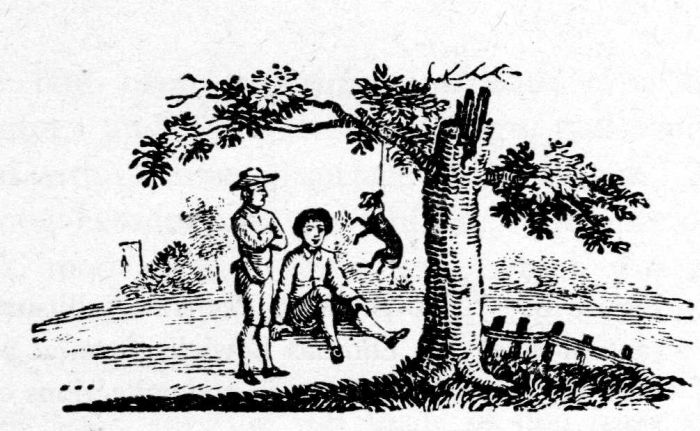 Figure 9.—Tailpiece by Thomas
Bewick (actual size), from A general
history of quadrupeds, 1790, in the
collections of the Library of Congress.
Figure 9.—Tailpiece by Thomas
Bewick (actual size), from A general
history of quadrupeds, 1790, in the
collections of the Library of Congress.
When the cuts in this book are compared with earlier impressions from wood blocks, the difference is quickly seen. The blocks are more highly wrought, yet every line is crisp and clear and the impressions are black and brilliant. When we realize that the only new technological factor of any consequence was the use of good smooth wove paper, we can appreciate its significance.
There were no other developments of note in the practice of printing during the 18th century. The old wooden hand press, unimproved except for minor devices, was still in universal use. Ink was little improved; paper was handmade; type was made from hand moulds. The ink was still applied by dabbing with inking balls of wool-stuffed leather nailed to wooden forms. The leather was still kept soft by removing it and soaking it in urine, after which it was trampled for some time to complete the unsavory operation. Paper still had to be dampened overnight before printing, and freshly inked sheets were still hung to dry over cords stretched across the room.
[24] D. C. Thomson, The life and works of Thomas Bewick, London, 1882, p. 152.
[25] D. B. Updike, Printing types, their history, forms and use, Cambridge and London, 1922, vol. 2, pp. 122, 123.
But with a more sympathetic surface for receiving ink from relief blocks, a new avenue for wood engraving was now open. In the following year, 1797, the first volume of Bewick's finest and best-known work was published. This was the History of British birds, for which he and his pupils did the cuts while Ralph Beilby, his partner and former master, provided the descriptions (see figs. 12, 13, and 14.) It achieved an immense and instantaneous popularity that carried the artist's name over the British Isles. The attractiveness of the subject, the freshness of the medium—which could render the softness of feathers and could be interspersed with text—the powerful and decorative little tail pieces, and the comparative inexpensiveness of the volumes, brought the Birds into homes everywhere.
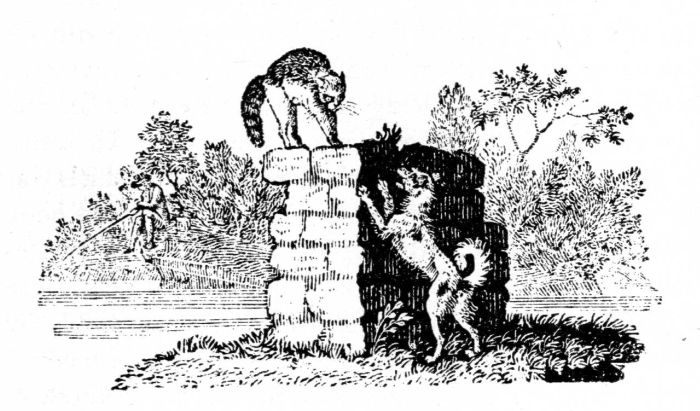 Figure 10.—Tailpiece by Thomas
Bewick (actual size), from A general
history of quadrupeds, 1790, in the
collections of the Library of Congress.
Figure 10.—Tailpiece by Thomas
Bewick (actual size), from A general
history of quadrupeds, 1790, in the
collections of the Library of Congress.
Actually, wood engraving was not immediately adopted on a wide scale. Having done without it for so long, printers and publishers made no concerted rush to avail themselves of the new type of cuts. Bewick's pupils found little of this kind of work to do before about 1830. Luke Clennell dropped engraving for painting; William Harvey restricted himself to drawing and designing; Charlton Nesbit[Pg 197] and John Jackson remained engravers, as did a host of lesser individuals. Dobson says:[26]
The pupils who quitted him to seek their fortunes in London either made their way with difficulty, or turned to other pursuits, and the real popularization of wood-engraving did not take place until some years after his death.
One reason for delay in adopting the new technique may have been the danger of the block splitting, or of the sections of wood coming apart at the mortise-joints during the printing operation. If this happened, work had to be suspended until a new block was engraved, or until the sections were reglued. For periodicals with deadlines, this was a serious hazard.
In any event, wood engraving did not really flourish until a practical stereotyping process was perfected. By this procedure substitute blocks of type metal could replace the wood engravings in the press, and the danger of splitting the block was eliminated. The first steps of any importance toward a practical process were made by the Earl of Stanhope around 1800, but not until Claude Genoux in France, between 1828 and 1829, developed the papier mâché or wet mat process could acceptable stereotypes of entire pages be produced.[27] By this method, patented on July 24, 1829, and others that followed, a number of duplicate plates of each page could be made as required for rapid printing on a battery of presses. Wood engraving now emerged as a practical method of illustration for popular publications. The Penny Magazine and the Saturday Magazine, founded in 1832, immediately made use of Genoux's stereotyping process. Dobson[28] describes the effect of these periodicals:
"The art of wood engraving received an astonishing impact from these publications. The engraver, instead of working merely with his own hands, has been obliged to take five or six pupils to get through the work." (Mr. Cowper's evidence before the Select Committee on Arts and Manufactures, 1835). It is difficult nowadays [1884] to understand what a revelation these two periodicals, with their representations of far countries and foreign animals, of masterpieces of painting and sculpture, were to middle-class households fifty years ago.
[26] Dobson, op. cit. (footnote 8), p. 174.
[27] George Kubler, A history of stereotyping, New York, 1941, p. 75.
[28] Dobson, op. cit. (footnote 8), p. 173.
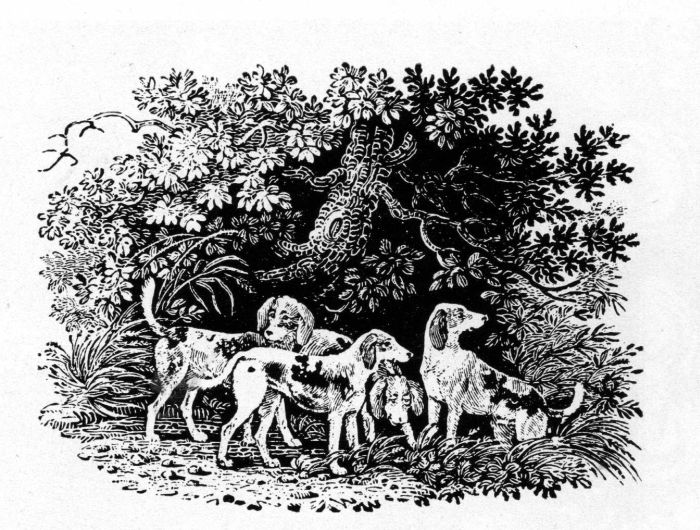 Figure 11.—Tailpiece by Thomas
Bewick (actual size), engraved after a
drawing by John Bewick, from The
Chase, by William Somervile, 1796.
(Photo courtesy the Library of Congress.)
Figure 11.—Tailpiece by Thomas
Bewick (actual size), engraved after a
drawing by John Bewick, from The
Chase, by William Somervile, 1796.
(Photo courtesy the Library of Congress.)
We will not pursue Bewick's career further. With habits of hard work deeply ingrained, he kept at his bench until his death in 1828, engraving an awesome quantity of cuts. But he never surpassed his work on the Birds, although his reputation grew in proportion to the spread of wood engraving throughout the world.
The medium became more and more detailed, and eventually rivaled photography in its minute variations of tone (see figs. 15 and 16). But printing wood engravings never was a problem again. Not only was wove paper always used in this connection, but it had become much cheaper through the invention of a machine for producing it in lengths. Nicholas Louis Robert, in France, had developed and exhibited such an apparatus in 1797, at the instigation of M. Didot. John Gamble in England, working with Henry and Charles Fourdrinier, engaged a fine mechanic, Bryan Donkin, to build a machine on improved principles. The first comparatively successful one was completed in 1803. It was periodically improved, and wove paper appeared in increasing quantities. Spicer[29] says: "Naturally these improvements and economies in the manufacture of paper were accompanied by a corresponding increase in output. Where, in 1806, a machine was capable of making 6 cwt. in twelve hours, in 1813 it could turn out double that quantity in the same time at one quarter the expense."
[29] A. D. Spicer, The paper trade, London, 1907, p. 63.
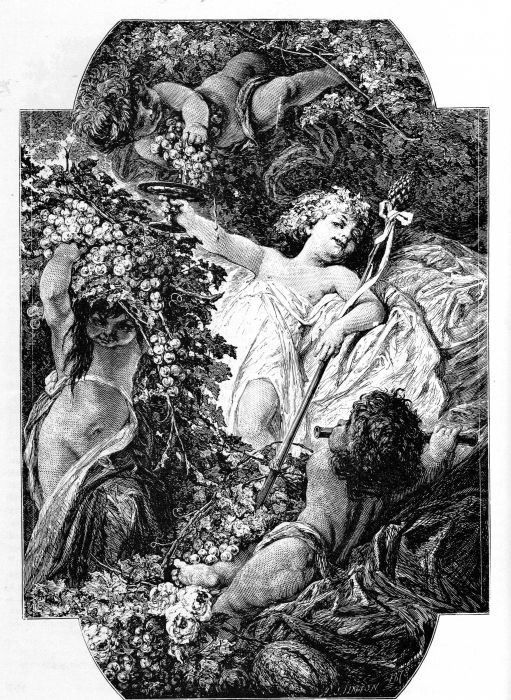 Figure 12.—Wood Engraving by W. J. Linton, 1878 (Actual Size). The detail
opposite is enlarged four times to show white line-technique.
Figure 12.—Wood Engraving by W. J. Linton, 1878 (Actual Size). The detail
opposite is enlarged four times to show white line-technique.
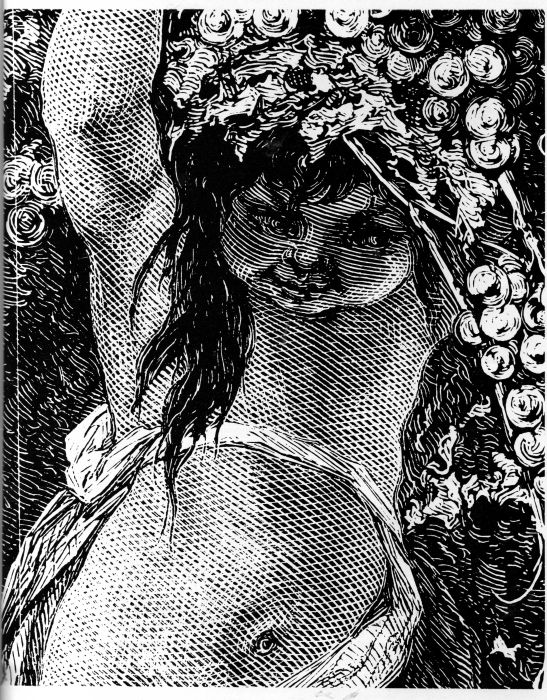
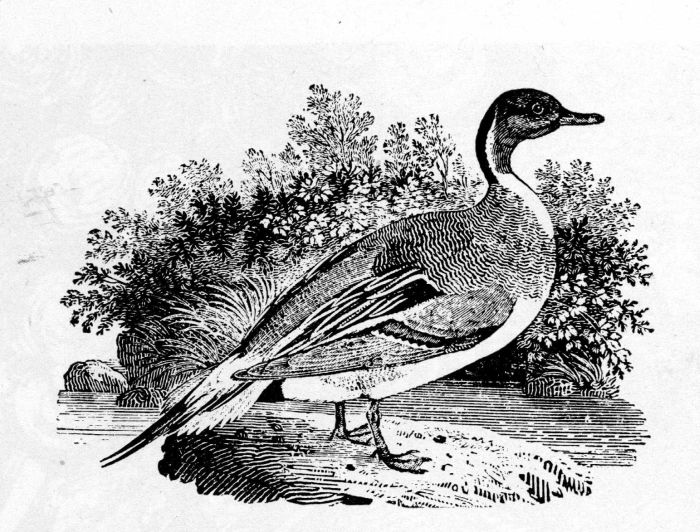 Figure 13.—"Pintail Duck" by Thomas Bewick
(actual size), from History of British birds, vol. 2,
1804. The detail opposite is enlarged three times.
Figure 13.—"Pintail Duck" by Thomas Bewick
(actual size), from History of British birds, vol. 2,
1804. The detail opposite is enlarged three times.
At about the same time the all-iron Stanhope press began to be manufactured in quantity, and shortly the new inking roller invented by the indispensable Earl came into use to supplant the old inking balls. Later in the century (there is no need to go into specific detail here) calendered and coated papers were introduced, and wood engraving on these glossy papers became a medium that could reproduce wash drawings, crayon drawings, pencil drawings, and oil paintings so faithfully that all the original textures were apparent.[30] The engraver, concerned entirely with accurate reproduction, became little more than a mechanic who rendered pictures drawn on the blocks by an artist. In time, photographic processes came to be used for transferring pictures to the blocks and eventually, of course, photomechanical halftones replaced the wood engraver altogether.
[30] The electrotyping process, which came into prominence in 1839 through the experiments of Professor Jacobi in St. Petersburg and Jordan and Spencer in England, had made it possible to produce substitute plates of the highest fidelity. For fine work, these were much superior to stereotyping.
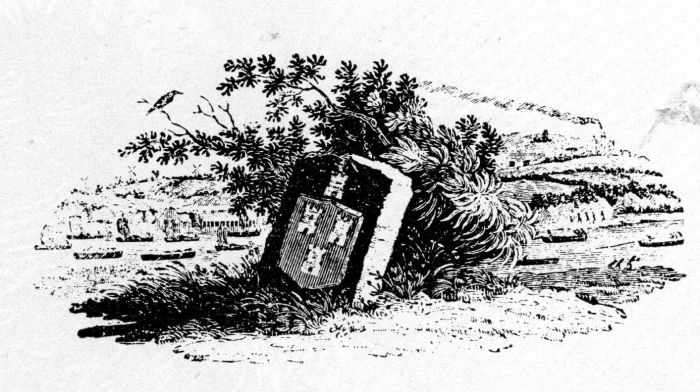 Figure 14.—Title-Page Illustration by Thomas
Bewick, from History of British birds, vol. 1, 1797.
(Actual size.)
Figure 14.—Title-Page Illustration by Thomas
Bewick, from History of British birds, vol. 1, 1797.
(Actual size.)
Bewick was an artist, not a reproductive craftsman. His blocks were conceived as original engravings, not as imitations of tones and textures created in another medium. If wood engraving advanced in the direction of commercialism to fill an overwhelming mass need, it was only because he had given it a technical basis. But it had greater artistic potentialities, as proved by Blake, Calvert, and Lepére, among others, and has found new life in the engravers of the 20th-century revival.
The reasons for Bewick's remarkable effectiveness can now be summed up. He succeeded, first, because he was the natural inheritor of a specifically English graphic arts process, burin-engraving on the end grain of wood. This had been practiced almost solely in England, which lacked a woodcut tradition, for about 75 years before the date he finished his apprenticeship. We know from Jackson's contemporary account that end-grain wood engraving was standard practice in England from about 1700. Bewick merely continued and refined a medium that came down to him as a national tradition.
Secondly, his country isolation and lack of academic training saved him from the inanity of repeating the old decorative devices—trophies, cartouches, classical figures, Roman ruins, and other international conventions that had lost their significance by the 1780's, although a spurious classicism was still kept alive for genteel consumption and the romantic picturesque still persisted in interior decoration.[Pg 201]

Thirdly, he looked at life and nature with a fresh eye, without preconceptions. While his lack of larger vision held him down as an artist, it contributed to his feeling for natural textures and story-telling detail. His approach to illustration, therefore, was the spontaneous expression of an observant but unimaginative nature, coated with a bitter-sweet sentiment. It was this quality, so homely and common and yet so charged with integrity, that delivered the shock of recognition to a mass audience.
Lastly, and perhaps most importantly in the long run, he was fortunate enough to live at a time when a necessary prerequisite for the physical appearance of his work, wove paper, was coming into use. Without it he would soon have had to simplify his line system, returning to older and less detailed methods, or his work would have remained unprintable. It was the new paper that allowed him to extract unprecedented subtleties from the wood block, that made his cuts print clearly and evenly, and that encouraged the expansion of the wood engraving process. These factors, taken together, make up the phenomenon of Thomas Bewick.
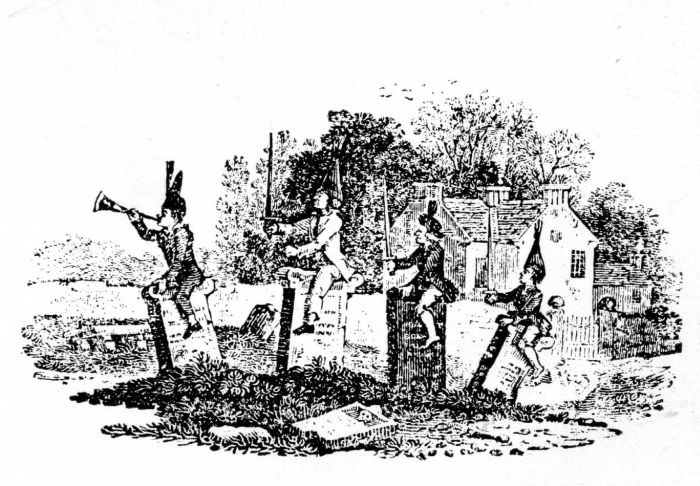 Figure 15.—Tailpiece by Thomas Bewick, from
History of British birds, vol. 2, 1804. (Actual size.)
Figure 15.—Tailpiece by Thomas Bewick, from
History of British birds, vol. 2, 1804. (Actual size.)
U. S. GOVERNMENT PRINTING OFFICE: 1959
***END OF THE PROJECT GUTENBERG EBOOK WHY BEWICK SUCCEEDED***
******* This file should be named 29928-h.txt or 29928-h.zip *******
This and all associated files of various formats will be found in:
http://www.gutenberg.org/2/9/9/2/29928
Updated editions will replace the previous one--the old editions will be renamed.
Creating the works from public domain print editions means that no one owns a United States copyright in these works, so the Foundation (and you!) can copy and distribute it in the United States without permission and without paying copyright royalties. Special rules, set forth in the General Terms of Use part of this license, apply to copying and distributing Project Gutenberg-tm electronic works to protect the PROJECT GUTENBERG-tm concept and trademark. Project Gutenberg is a registered trademark, and may not be used if you charge for the eBooks, unless you receive specific permission. If you do not charge anything for copies of this eBook, complying with the rules is very easy. You may use this eBook for nearly any purpose such as creation of derivative works, reports, performances and research. They may be modified and printed and given away--you may do practically ANYTHING with public domain eBooks. Redistribution is subject to the trademark license, especially commercial redistribution.
*** START: FULL LICENSE ***
THE FULL PROJECT GUTENBERG LICENSE
PLEASE READ THIS BEFORE YOU DISTRIBUTE OR USE THIS WORK
To protect the Project Gutenberg-tm mission of promoting the free
distribution of electronic works, by using or distributing this work
(or any other work associated in any way with the phrase "Project
Gutenberg"), you agree to comply with all the terms of the Full Project
Gutenberg-tm License (available with this file or online at
http://www.gutenberg.org/license).
Section 1. General Terms of Use and Redistributing Project Gutenberg-tm
electronic works
1.A. By reading or using any part of this Project Gutenberg-tm
electronic work, you indicate that you have read, understand, agree to
and accept all the terms of this license and intellectual property
(trademark/copyright) agreement. If you do not agree to abide by all
the terms of this agreement, you must cease using and return or destroy
all copies of Project Gutenberg-tm electronic works in your possession.
If you paid a fee for obtaining a copy of or access to a Project
Gutenberg-tm electronic work and you do not agree to be bound by the
terms of this agreement, you may obtain a refund from the person or
entity to whom you paid the fee as set forth in paragraph 1.E.8.
1.B. "Project Gutenberg" is a registered trademark. It may only be
used on or associated in any way with an electronic work by people who
agree to be bound by the terms of this agreement. There are a few
things that you can do with most Project Gutenberg-tm electronic works
even without complying with the full terms of this agreement. See
paragraph 1.C below. There are a lot of things you can do with Project
Gutenberg-tm electronic works if you follow the terms of this agreement
and help preserve free future access to Project Gutenberg-tm electronic
works. See paragraph 1.E below.
1.C. The Project Gutenberg Literary Archive Foundation ("the Foundation"
or PGLAF), owns a compilation copyright in the collection of Project
Gutenberg-tm electronic works. Nearly all the individual works in the
collection are in the public domain in the United States. If an
individual work is in the public domain in the United States and you are
located in the United States, we do not claim a right to prevent you from
copying, distributing, performing, displaying or creating derivative
works based on the work as long as all references to Project Gutenberg
are removed. Of course, we hope that you will support the Project
Gutenberg-tm mission of promoting free access to electronic works by
freely sharing Project Gutenberg-tm works in compliance with the terms of
this agreement for keeping the Project Gutenberg-tm name associated with
the work. You can easily comply with the terms of this agreement by
keeping this work in the same format with its attached full Project
Gutenberg-tm License when you share it without charge with others.
1.D. The copyright laws of the place where you are located also govern
what you can do with this work. Copyright laws in most countries are in
a constant state of change. If you are outside the United States, check
the laws of your country in addition to the terms of this agreement
before downloading, copying, displaying, performing, distributing or
creating derivative works based on this work or any other Project
Gutenberg-tm work. The Foundation makes no representations concerning
the copyright status of any work in any country outside the United
States.
1.E. Unless you have removed all references to Project Gutenberg:
1.E.1. The following sentence, with active links to, or other immediate
access to, the full Project Gutenberg-tm License must appear prominently
whenever any copy of a Project Gutenberg-tm work (any work on which the
phrase "Project Gutenberg" appears, or with which the phrase "Project
Gutenberg" is associated) is accessed, displayed, performed, viewed,
copied or distributed:
This eBook is for the use of anyone anywhere at no cost and with
almost no restrictions whatsoever. You may copy it, give it away or
re-use it under the terms of the Project Gutenberg License included
with this eBook or online at www.gutenberg.org
1.E.2. If an individual Project Gutenberg-tm electronic work is derived
from the public domain (does not contain a notice indicating that it is
posted with permission of the copyright holder), the work can be copied
and distributed to anyone in the United States without paying any fees
or charges. If you are redistributing or providing access to a work
with the phrase "Project Gutenberg" associated with or appearing on the
work, you must comply either with the requirements of paragraphs 1.E.1
through 1.E.7 or obtain permission for the use of the work and the
Project Gutenberg-tm trademark as set forth in paragraphs 1.E.8 or
1.E.9.
1.E.3. If an individual Project Gutenberg-tm electronic work is posted
with the permission of the copyright holder, your use and distribution
must comply with both paragraphs 1.E.1 through 1.E.7 and any additional
terms imposed by the copyright holder. Additional terms will be linked
to the Project Gutenberg-tm License for all works posted with the
permission of the copyright holder found at the beginning of this work.
1.E.4. Do not unlink or detach or remove the full Project Gutenberg-tm
License terms from this work, or any files containing a part of this
work or any other work associated with Project Gutenberg-tm.
1.E.5. Do not copy, display, perform, distribute or redistribute this
electronic work, or any part of this electronic work, without
prominently displaying the sentence set forth in paragraph 1.E.1 with
active links or immediate access to the full terms of the Project
Gutenberg-tm License.
1.E.6. You may convert to and distribute this work in any binary,
compressed, marked up, nonproprietary or proprietary form, including any
word processing or hypertext form. However, if you provide access to or
distribute copies of a Project Gutenberg-tm work in a format other than
"Plain Vanilla ASCII" or other format used in the official version
posted on the official Project Gutenberg-tm web site (www.gutenberg.org),
you must, at no additional cost, fee or expense to the user, provide a
copy, a means of exporting a copy, or a means of obtaining a copy upon
request, of the work in its original "Plain Vanilla ASCII" or other
form. Any alternate format must include the full Project Gutenberg-tm
License as specified in paragraph 1.E.1.
1.E.7. Do not charge a fee for access to, viewing, displaying,
performing, copying or distributing any Project Gutenberg-tm works
unless you comply with paragraph 1.E.8 or 1.E.9.
1.E.8. You may charge a reasonable fee for copies of or providing
access to or distributing Project Gutenberg-tm electronic works provided
that
- You pay a royalty fee of 20% of the gross profits you derive from
the use of Project Gutenberg-tm works calculated using the method
you already use to calculate your applicable taxes. The fee is
owed to the owner of the Project Gutenberg-tm trademark, but he
has agreed to donate royalties under this paragraph to the
Project Gutenberg Literary Archive Foundation. Royalty payments
must be paid within 60 days following each date on which you
prepare (or are legally required to prepare) your periodic tax
returns. Royalty payments should be clearly marked as such and
sent to the Project Gutenberg Literary Archive Foundation at the
address specified in Section 4, "Information about donations to
the Project Gutenberg Literary Archive Foundation."
- You provide a full refund of any money paid by a user who notifies
you in writing (or by e-mail) within 30 days of receipt that s/he
does not agree to the terms of the full Project Gutenberg-tm
License. You must require such a user to return or
destroy all copies of the works possessed in a physical medium
and discontinue all use of and all access to other copies of
Project Gutenberg-tm works.
- You provide, in accordance with paragraph 1.F.3, a full refund of any
money paid for a work or a replacement copy, if a defect in the
electronic work is discovered and reported to you within 90 days
of receipt of the work.
- You comply with all other terms of this agreement for free
distribution of Project Gutenberg-tm works.
1.E.9. If you wish to charge a fee or distribute a Project Gutenberg-tm
electronic work or group of works on different terms than are set
forth in this agreement, you must obtain permission in writing from
both the Project Gutenberg Literary Archive Foundation and Michael
Hart, the owner of the Project Gutenberg-tm trademark. Contact the
Foundation as set forth in Section 3 below.
1.F.
1.F.1. Project Gutenberg volunteers and employees expend considerable
effort to identify, do copyright research on, transcribe and proofread
public domain works in creating the Project Gutenberg-tm
collection. Despite these efforts, Project Gutenberg-tm electronic
works, and the medium on which they may be stored, may contain
"Defects," such as, but not limited to, incomplete, inaccurate or
corrupt data, transcription errors, a copyright or other intellectual
property infringement, a defective or damaged disk or other medium, a
computer virus, or computer codes that damage or cannot be read by
your equipment.
1.F.2. LIMITED WARRANTY, DISCLAIMER OF DAMAGES - Except for the "Right
of Replacement or Refund" described in paragraph 1.F.3, the Project
Gutenberg Literary Archive Foundation, the owner of the Project
Gutenberg-tm trademark, and any other party distributing a Project
Gutenberg-tm electronic work under this agreement, disclaim all
liability to you for damages, costs and expenses, including legal
fees. YOU AGREE THAT YOU HAVE NO REMEDIES FOR NEGLIGENCE, STRICT
LIABILITY, BREACH OF WARRANTY OR BREACH OF CONTRACT EXCEPT THOSE
PROVIDED IN PARAGRAPH F3. YOU AGREE THAT THE FOUNDATION, THE
TRADEMARK OWNER, AND ANY DISTRIBUTOR UNDER THIS AGREEMENT WILL NOT BE
LIABLE TO YOU FOR ACTUAL, DIRECT, INDIRECT, CONSEQUENTIAL, PUNITIVE OR
INCIDENTAL DAMAGES EVEN IF YOU GIVE NOTICE OF THE POSSIBILITY OF SUCH
DAMAGE.
1.F.3. LIMITED RIGHT OF REPLACEMENT OR REFUND - If you discover a
defect in this electronic work within 90 days of receiving it, you can
receive a refund of the money (if any) you paid for it by sending a
written explanation to the person you received the work from. If you
received the work on a physical medium, you must return the medium with
your written explanation. The person or entity that provided you with
the defective work may elect to provide a replacement copy in lieu of a
refund. If you received the work electronically, the person or entity
providing it to you may choose to give you a second opportunity to
receive the work electronically in lieu of a refund. If the second copy
is also defective, you may demand a refund in writing without further
opportunities to fix the problem.
1.F.4. Except for the limited right of replacement or refund set forth
in paragraph 1.F.3, this work is provided to you 'AS-IS,' WITH NO OTHER
WARRANTIES OF ANY KIND, EXPRESS OR IMPLIED, INCLUDING BUT NOT LIMITED TO
WARRANTIES OF MERCHANTIBILITY OR FITNESS FOR ANY PURPOSE.
1.F.5. Some states do not allow disclaimers of certain implied
warranties or the exclusion or limitation of certain types of damages.
If any disclaimer or limitation set forth in this agreement violates the
law of the state applicable to this agreement, the agreement shall be
interpreted to make the maximum disclaimer or limitation permitted by
the applicable state law. The invalidity or unenforceability of any
provision of this agreement shall not void the remaining provisions.
1.F.6. INDEMNITY - You agree to indemnify and hold the Foundation, the
trademark owner, any agent or employee of the Foundation, anyone
providing copies of Project Gutenberg-tm electronic works in accordance
with this agreement, and any volunteers associated with the production,
promotion and distribution of Project Gutenberg-tm electronic works,
harmless from all liability, costs and expenses, including legal fees,
that arise directly or indirectly from any of the following which you do
or cause to occur: (a) distribution of this or any Project Gutenberg-tm
work, (b) alteration, modification, or additions or deletions to any
Project Gutenberg-tm work, and (c) any Defect you cause.
Section 2. Information about the Mission of Project Gutenberg-tm
Project Gutenberg-tm is synonymous with the free distribution of
electronic works in formats readable by the widest variety of computers
including obsolete, old, middle-aged and new computers. It exists
because of the efforts of hundreds of volunteers and donations from
people in all walks of life.
Volunteers and financial support to provide volunteers with the
assistance they need are critical to reaching Project Gutenberg-tm's
goals and ensuring that the Project Gutenberg-tm collection will
remain freely available for generations to come. In 2001, the Project
Gutenberg Literary Archive Foundation was created to provide a secure
and permanent future for Project Gutenberg-tm and future generations.
To learn more about the Project Gutenberg Literary Archive Foundation
and how your efforts and donations can help, see Sections 3 and 4
and the Foundation web page at http://www.gutenberg.org/fundraising/pglaf.
Section 3. Information about the Project Gutenberg Literary Archive
Foundation
The Project Gutenberg Literary Archive Foundation is a non profit
501(c)(3) educational corporation organized under the laws of the
state of Mississippi and granted tax exempt status by the Internal
Revenue Service. The Foundation's EIN or federal tax identification
number is 64-6221541. Contributions to the Project Gutenberg
Literary Archive Foundation are tax deductible to the full extent
permitted by U.S. federal laws and your state's laws.
The Foundation's principal office is located at 4557 Melan Dr. S.
Fairbanks, AK, 99712., but its volunteers and employees are scattered
throughout numerous locations. Its business office is located at
809 North 1500 West, Salt Lake City, UT 84116, (801) 596-1887, email
business@pglaf.org. Email contact links and up to date contact
information can be found at the Foundation's web site and official
page at http://www.gutenberg.org/about/contact
For additional contact information:
Dr. Gregory B. Newby
Chief Executive and Director
gbnewby@pglaf.org
Section 4. Information about Donations to the Project Gutenberg
Literary Archive Foundation
Project Gutenberg-tm depends upon and cannot survive without wide
spread public support and donations to carry out its mission of
increasing the number of public domain and licensed works that can be
freely distributed in machine readable form accessible by the widest
array of equipment including outdated equipment. Many small donations
($1 to $5,000) are particularly important to maintaining tax exempt
status with the IRS.
The Foundation is committed to complying with the laws regulating
charities and charitable donations in all 50 states of the United
States. Compliance requirements are not uniform and it takes a
considerable effort, much paperwork and many fees to meet and keep up
with these requirements. We do not solicit donations in locations
where we have not received written confirmation of compliance. To
SEND DONATIONS or determine the status of compliance for any
particular state visit http://www.gutenberg.org/fundraising/pglaf
While we cannot and do not solicit contributions from states where we
have not met the solicitation requirements, we know of no prohibition
against accepting unsolicited donations from donors in such states who
approach us with offers to donate.
International donations are gratefully accepted, but we cannot make
any statements concerning tax treatment of donations received from
outside the United States. U.S. laws alone swamp our small staff.
Please check the Project Gutenberg Web pages for current donation
methods and addresses. Donations are accepted in a number of other
ways including checks, online payments and credit card donations.
To donate, please visit: http://www.gutenberg.org/fundraising/donate
Section 5. General Information About Project Gutenberg-tm electronic
works.
Professor Michael S. Hart is the originator of the Project Gutenberg-tm
concept of a library of electronic works that could be freely shared
with anyone. For thirty years, he produced and distributed Project
Gutenberg-tm eBooks with only a loose network of volunteer support.
Project Gutenberg-tm eBooks are often created from several printed
editions, all of which are confirmed as Public Domain in the U.S.
unless a copyright notice is included. Thus, we do not necessarily
keep eBooks in compliance with any particular paper edition.
Each eBook is in a subdirectory of the same number as the eBook's
eBook number, often in several formats including plain vanilla ASCII,
compressed (zipped), HTML and others.
Corrected EDITIONS of our eBooks replace the old file and take over
the old filename and etext number. The replaced older file is renamed.
VERSIONS based on separate sources are treated as new eBooks receiving
new filenames and etext numbers.
Most people start at our Web site which has the main PG search facility:
http://www.gutenberg.org
This Web site includes information about Project Gutenberg-tm,
including how to make donations to the Project Gutenberg Literary
Archive Foundation, how to help produce our new eBooks, and how to
subscribe to our email newsletter to hear about new eBooks.
EBooks posted prior to November 2003, with eBook numbers BELOW #10000,
are filed in directories based on their release date. If you want to
download any of these eBooks directly, rather than using the regular
search system you may utilize the following addresses and just
download by the etext year.
http://www.gutenberg.org/dirs/etext06/
(Or /etext 05, 04, 03, 02, 01, 00, 99,
98, 97, 96, 95, 94, 93, 92, 92, 91 or 90)
EBooks posted since November 2003, with etext numbers OVER #10000, are
filed in a different way. The year of a release date is no longer part
of the directory path. The path is based on the etext number (which is
identical to the filename). The path to the file is made up of single
digits corresponding to all but the last digit in the filename. For
example an eBook of filename 10234 would be found at:
http://www.gutenberg.org/dirs/1/0/2/3/10234
or filename 24689 would be found at:
http://www.gutenberg.org/dirs/2/4/6/8/24689
An alternative method of locating eBooks:
http://www.gutenberg.org/dirs/GUTINDEX.ALL
*** END: FULL LICENSE ***